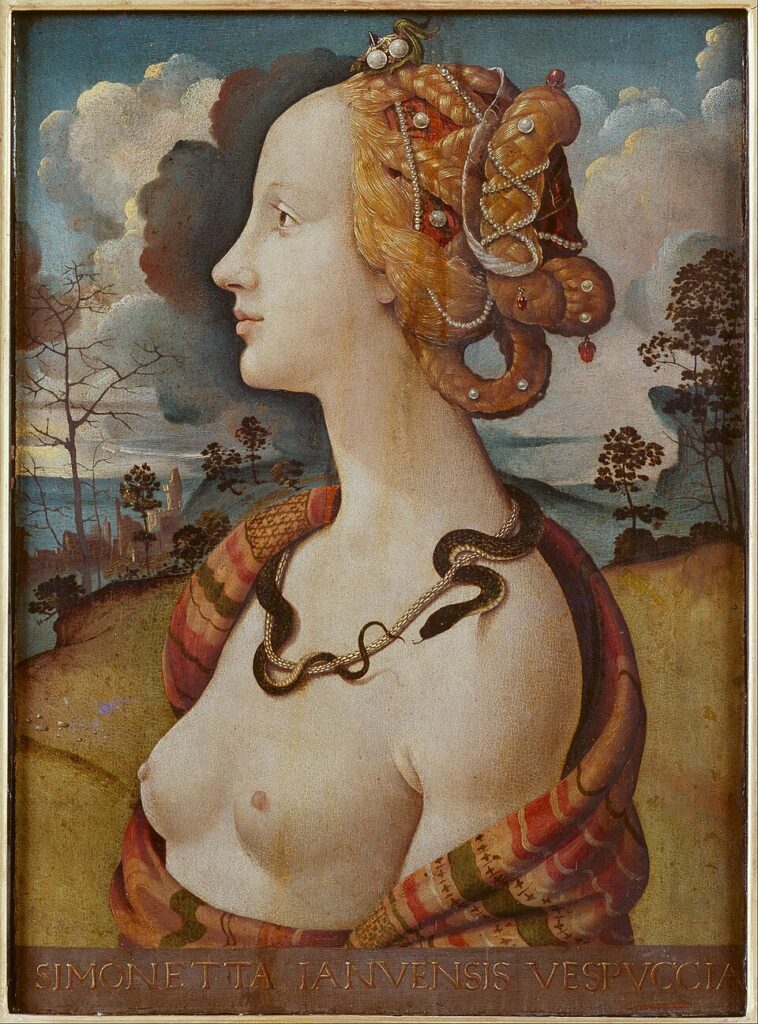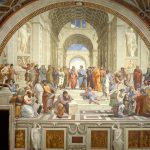
Imagine Florence in the late 15th century. The city is a hotbed of creativity, political intrigue, and economic prosperity. Under the patronage of the powerful Medici family, artists, thinkers, and visionaries are transforming the city into the cradle of the Renaissance. Amidst this bustling scene, a painter named Sandro Botticelli creates some of the most iconic artworks of the era. His muse? A woman of extraordinary beauty and grace—Simonetta Vespucci.
A Glimpse into Renaissance Florence
Before we delve into the relationship between Botticelli and Simonetta, let’s set the stage. Florence in the 1470s was a vibrant, dynamic city. Wealth from banking and trade fueled an explosion of artistic and intellectual activity. The Medici family, especially Lorenzo de’ Medici, known as Lorenzo the Magnificent, played a crucial role in supporting artists like Leonardo da Vinci, Michelangelo, and, of course, Sandro Botticelli.
Botticelli, born Alessandro di Mariano di Vanni Filipepi in 1445, was a native Florentine. He trained under Fra Filippo Lippi, a prominent painter of the time. Botticelli’s work combined a mastery of line and color with an ability to capture ethereal beauty and complex emotions. He was part of the Medici circle, which provided him with numerous commissions and exposure to other great minds of the period.
Who Was Simonetta Vespucci?
Simonetta Vespucci, née Simonetta Cattaneo, was born in 1453 in the Ligurian town of Porto Venere. She moved to Florence after marrying Marco Vespucci, a distant cousin of the famous explorer Amerigo Vespucci. Simonetta quickly became renowned for her beauty, charm, and grace. She was the star of Florentine society and caught the eye of many admirers, including Lorenzo and Giuliano de’ Medici.
But it was Botticelli who immortalized her beauty in his paintings. The connection between Botticelli and Simonetta has fascinated art historians for centuries. While there is little concrete evidence of a romantic relationship, Botticelli’s repeated use of Simonetta’s likeness in his works suggests she was a significant source of inspiration.
The Portrait of a Muse
One of the earliest and most famous depictions of Simonetta is the painting “Portrait of a Young Woman” (c. 1480). While it’s debated whether this portrait was intended to represent Simonetta specifically, the painting epitomizes the Renaissance ideal of feminine beauty—golden hair, delicate features, and a serene expression.
In this portrait, Simonetta is depicted with flowing, wavy hair and a composed yet captivating gaze. Her attire, adorned with pearls and luxurious fabrics, speaks to her status and the admiration she commanded. Botticelli’s technique, emphasizing fine details and graceful lines, enhances her otherworldly beauty. The painting is a testament to the allure she held not just in her time but through the centuries.
The Birth of Venus: A Testament to Beauty
Perhaps the most iconic representation of Simonetta Vespucci is in Botticelli’s “The Birth of Venus” (c. 1485). This masterpiece, housed in the Uffizi Gallery in Florence, captures the goddess Venus emerging from the sea on a shell, symbolizing beauty and purity. Art historians widely believe that the face of Venus is modeled after Simonetta.
“The Birth of Venus” is more than just a celebration of physical beauty. It embodies the Neoplatonic philosophy prevalent in Botticelli’s time, which posited that physical beauty could lead the soul closer to divine beauty. By depicting Simonetta as Venus, Botticelli elevates her to a symbol of idealized, divine beauty. The painting’s ethereal quality, with its soft lines, delicate colors, and serene composition, reinforces this spiritual dimension.
Primavera: The Dance of the Seasons
Another masterpiece featuring Simonetta is “Primavera” (c. 1482), also housed in the Uffizi Gallery. This large, allegorical painting is rich in symbolism and depicts a garden filled with mythological figures. Simonetta is believed to be represented as the central figure of Venus, presiding over the scene with grace and tranquility.
“Primavera” is a visual feast, with its intricate details and lush, verdant backdrop. The painting is a celebration of spring and fertility, with Flora, the goddess of flowers, scattering blooms, and the Three Graces dancing in harmonious elegance. Simonetta’s presence as Venus ties the natural world to the divine, reinforcing her role as a muse who bridges earthly and heavenly beauty.
A Legacy Beyond Beauty
Simonetta Vespucci’s influence on Botticelli’s art extended beyond her physical beauty. She represented an ideal that Botticelli sought to capture and immortalize in his works. Her presence in his paintings goes beyond mere representation; she embodies a timeless elegance and grace that resonate with viewers across generations.
Tragically, Simonetta’s life was short. She died in 1476 at the age of 22, possibly from tuberculosis. Her death deeply affected those who knew her, including Botticelli. Despite her brief life, Simonetta’s legacy endured through Botticelli’s art. The painter himself requested to be buried at her feet in the Church of Ognissanti in Florence, a testament to the profound impact she had on his life and work.
The Artistic and Cultural Impact
Botticelli’s depictions of Simonetta Vespucci had a significant impact on Renaissance art. His works, characterized by their elegance and idealized beauty, influenced many contemporaries and later artists. Botticelli’s ability to infuse his paintings with both technical mastery and emotional depth set a standard for artistic excellence.
Moreover, Simonetta’s image became a symbol of Renaissance ideals. Her portrayal in Botticelli’s works reflected the period’s fascination with classical antiquity, humanism, and the exploration of beauty and virtue. Simonetta, through Botticelli’s eyes, became a muse not only for the artist but for an entire cultural movement that sought to reconnect with the values and aesthetics of ancient Greece and Rome.
The Mystery and Myth
The relationship between Botticelli and Simonetta Vespucci is shrouded in mystery and myth. Was she truly his muse, or is this a romanticized interpretation of art history? While historical records provide limited insights, the visual evidence in Botticelli’s paintings suggests a deep connection.
Some art historians speculate that Botticelli’s depictions of Simonetta were driven more by artistic idealization than personal attachment. Renaissance artists often used idealized figures to convey philosophical and aesthetic ideals. In this context, Simonetta’s beauty provided the perfect model for Botticelli’s exploration of divine and earthly beauty.
Others argue that there may have been a genuine emotional bond between the artist and his muse. Botticelli’s decision to be buried near Simonetta indicates a personal significance that goes beyond professional admiration. While we may never know the full extent of their relationship, the enduring allure of their story lies in its blend of historical fact and romantic legend.
Rediscovering Botticelli and Simonetta
The fascination with Botticelli and Simonetta Vespucci continues to captivate art lovers and historians alike. Modern exhibitions and scholarly research keep their story alive, offering new interpretations and insights into their relationship and its impact on Renaissance art.
For instance, recent studies have explored the symbolism in Botticelli’s works, uncovering deeper layers of meaning related to Neoplatonism, mythology, and contemporary Florentine society. These analyses provide a richer understanding of how Botticelli’s art reflects the complex interplay of beauty, philosophy, and culture in the Renaissance.
Moreover, contemporary artists and filmmakers have drawn inspiration from Botticelli and Simonetta, creating new works that pay homage to their legacy. From reinterpretations of “The Birth of Venus” to cinematic portrayals of Renaissance Florence, the influence of Botticelli and Simonetta endures in modern creative expressions.
Botticelli’s Artistic Evolution
Botticelli’s career spanned several decades, and his style evolved significantly over time. His early works, such as “Adoration of the Magi” (c. 1475-1476), demonstrate his skill in portraiture and narrative composition. These works were characterized by their meticulous attention to detail and the inclusion of contemporary figures, often members of the Medici family, in biblical scenes.
As his career progressed, Botticelli’s style became more refined and expressive. His later works, including “The Birth of Venus” and “Primavera,” showcase a heightened sensitivity to movement, form, and composition. These paintings reflect his deepening engagement with Neoplatonic ideas and his pursuit of capturing transcendent beauty.
Botticelli’s later years were marked by a shift in his artistic focus. Influenced by the fiery sermons of the Dominican friar Girolamo Savonarola, Botticelli’s works took on a more somber and religious tone. He produced a series of illustrations for Dante’s “Divine Comedy,” which, while less renowned than his mythological paintings, demonstrate his versatility and depth as an artist.
Simonetta’s Enduring Influence
Simonetta Vespucci’s influence on Botticelli’s art extends beyond her lifetime. Her image, immortalized in his paintings, continues to captivate and inspire. The recurring motif of her likeness in his works serves as a testament to her enduring legacy as a symbol of beauty, grace, and inspiration.
In modern times, Simonetta has become an icon in her own right. Her story has been retold in literature, art, and popular culture, solidifying her place in the pantheon of historical muses. The fascination with her life and her role in Botticelli’s art speaks to the timeless appeal of their intertwined legacies.
The Power of a Muse
The relationship between Botticelli and Simonetta Vespucci highlights the powerful role of a muse in the creative process. A muse can inspire an artist to reach new heights, to explore new themes, and to push the boundaries of their art. Simonetta’s influence on Botticelli is a prime example of how a muse can shape an artist’s vision and leave an indelible mark on their work.
For Botticelli, Simonetta represented more than just physical beauty. She embodied an ideal that transcended the mundane, a vision of perfection that he sought to capture in his art. Through his paintings, Botticelli immortalized Simonetta, transforming her into a symbol of Renaissance ideals and humanistic values.
The Legacy of Botticelli and Simonetta
The legacy of Sandro Botticelli and Simonetta Vespucci endures through the centuries. Their story is one of artistic inspiration, timeless beauty, and the enduring power of art. Botticelli’s paintings, with their exquisite detail and profound symbolism, continue to resonate with audiences worldwide, offering a glimpse into the rich cultural tapestry of the Renaissance.
Simonetta Vespucci, through Botticelli’s eyes, remains an icon of beauty and grace. Her image, immortalized in his works, serves as a reminder of the transformative power of art and the enduring legacy of a muse. Their story is a testament to the timeless appeal of beauty and the enduring impact of artistic inspiration.
As we continue to explore and reinterpret the works of Botticelli, the connection between the artist and his muse remains a captivating subject of study and admiration. The legacy of Botticelli and Simonetta Vespucci is a reminder of the profound connections that can exist between an artist and their muse, and the lasting impact those connections can have on the world of art.
In the end, Botticelli’s art and Simonetta’s beauty have become intertwined, creating a legacy that transcends time and continues to inspire. Whether through the graceful lines of “The Birth of Venus” or the lush, allegorical garden of “Primavera,” the story of Sandro Botticelli and Simonetta Vespucci is one of enduring inspiration, artistic achievement, and the timeless quest for beauty.




